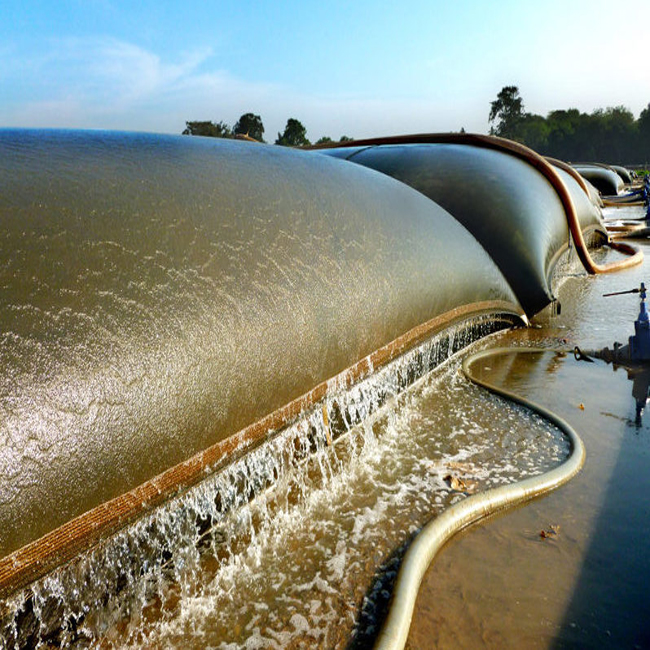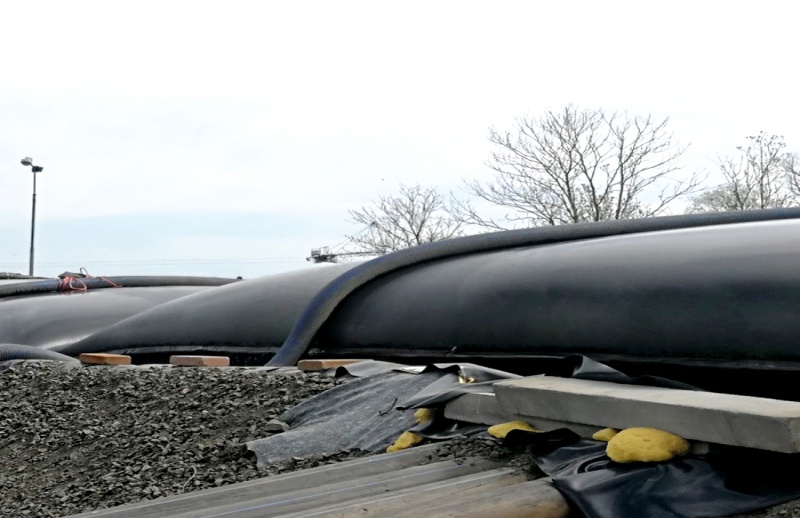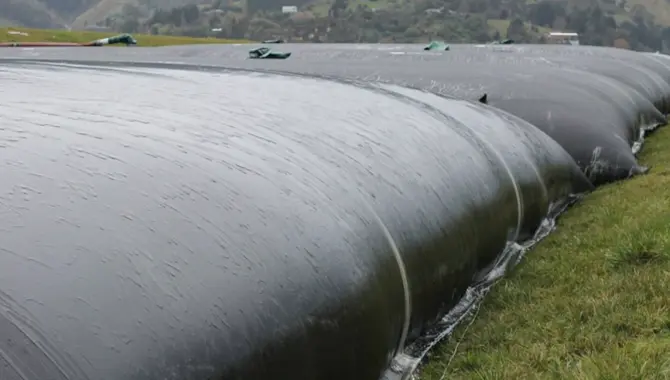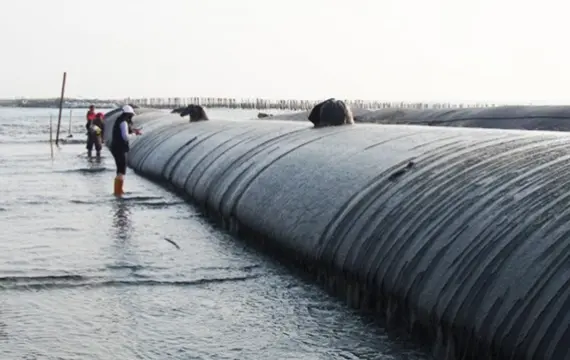


Geotube bags are an important geotechnical material and are widely used in many engineering fields due to their high efficiency, environmental protection, economy and durability.
 Composition and Structure
Composition and Structure
GeoTubes are fashioned from high-strength Geotextile fabrics that can be woven or non-woven. These fabrics feature specific properties such as permeability and strength allowing application performance.
They resemble large tubes and can have different lengths and diameter depending on the project specifications. Filler material is fed into the GeoTubes through a gravity-feeding process or pumping.

GeoTubes is a bag made of High-Performance Polypropylene Mesh monofilament woven into bag fabric. GeoTubes has High Strength, Low Elongation, High Permeability, High UV resistance,Acid and Alkali Resistance, Anti-Microbial Erosion Properties, etc.
Geotube geobag is widely used in water conservancy, environmental protection, marine engineering and other fields.
| UNIT | TEST STANDARD | UNIT TEST STANDARD | ||||||||||
| DK70×95B | DK70×95 | DK120×120 | DK200×200 | DK200×200B | DK380 | DK580 | DK380PPi | DK580PPi | ||||
| Breaking strength | vertical | KN/m | ISO 10319-2015 |
85 | 85 | 130 | 220 | 220 | 70 | 85 | 70 | 85 |
| weft | KN/m | 105 | 115 | 120 | 200 | 210 | 60 | 80 | 80 | 105 | ||
| Elongation at break | vertical | % | 13 | 13 | 12 | 13 | 13 | 12 | 12 | 13 | 13 | |
| weft | % | 8 | 8 | 8 | 8 | 8 | 8 | 8 | 9 | 9 | ||
| Breaking strength at 2% elongation | vertical | KN/m | 14 | 14 | 20 | 12 | 10 | 14 | 15 | 9 | 8 | |
| Breaking strength at 5% elongation | weft | KN/m | 38 | 38 | 80 | 95 | 88 | 38 | 42 | 26.5 | 21 | |
| Weight | g/m2 | 430 | 450 | 540 | 850 | 870 | 285 | 385 | 340 | 420 | ||
| Joint tensile strength | KN/m | ISO 10321-2008 | 70 | 90 | 100 | 170 | 180 | |||||
| CBR Puncture Strength(CBR) | KN |
ASTM D6241 |
8 | 9 | 15 | 20 | 23 | 7 | 10 | 8.5 | 10 | |
| Dynamic perforation | mm | 10 | 8 | 10 | 8 | 8 | ||||||
| Equivalent aperture(O90) | mm |
ISO 12956 |
0.5 | 0.45 | 0.45 | 0.45 | 0.35 | 0.48 | 0.45 | 0.48 | 0.47 | |
| Permeability(Q50) | L/m2/s |
ISO 12956 |
50 | 35 | 14 | 18 | 15 | 35 | 42 | 58 | 58 | |
| UV Resistance(500 hours strong preservation rate) | % | ASTM D4355-2014 | 90 | 90 | 90 | 90 | 90 | 90 | 90 | 90 | 90 | |

Geotubes serve several important functions making them versatile and widely used in various applications as follows:
Containment- These tubes are an effective means of containing contaminated material, dredged material or industrial waste, preventing release into the surrounding environment.
Dewatering – GeoTubes are used in the separation of solids and liquids by draining water through the Geotextile fabric. This is observed in sediment and sludge removal projects.
Erosion Control – When strategically positioned along slopes, shorelines and riverbanks, they help prevent erosion and retain sediment only allowing water passage.
Hydraulic Works – GeoTubes are effective in managing water flow, reducing erosion, and maintaining stability in water-related infrastructure projects.
Land Reclamation – These tubes can be used to expand/create new land areas by providing a containment system allowing for controlled deposition of earth.
Shoreline Protection – They function as barriers against wave action, absorbing and dissipating wave energy, reducing impact on the shoreline thus protecting them from erosion and land loss.
Temporary Structures – GeoTubes can form temporary structures such as berms, cofferdams and retaining walls providing stability and support during construction.


Why Choose Geotube for Filtration
There are several advantages that GeoTubes offer making them ideal across a wide application range as highlighted below:
— GeoTubes can be customized to suit specific project requirements and site conditions in terms of design, size, and material fill.
— The fabric of these tubes allows water passage useful in the separation of solids from liquids like sludge and sediment.
— Geotubes do not damage streambanks.
— They help protect the environment by confining contaminants and other potentially hazardous substances, preventing their release.
— Using GeoTubes reduces the need for extensive excavation, transportation, and material disposal resulting in significant cost savings.
— It can be recycled and reused.
